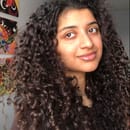If there’s one thing that every artist, including myself, hates, it’s rules. With the passage of time and shifts in culture, the best thing art forms provide us with is change and innovation, accomplished through the breaking of rules. Oscar-winning film editor Thelma Schoonmaker is one of my favourite rule-breakers in the world of filmmaking, and has instilled in me a new love for the underrated art of editing. In all my years of learning how to edit, I had always been taught that the best editing is the invisible kind. Making sure the transition is smooth is the ultimate goal of traditional filmmaking. On the other hand, Schoonmaker admits that she likes to “slap the audience in their face,” drawing their attention instead. Her style makes the audience want to know who is behind the eye-straining and “bad” cuts, only to realize that this confusion is the genius behind the scene.
While I’ve always loved watching movies for their direction and acting, the first film to really draw me towards its editing was Shutter Island. The psychological thriller was directed by Martin Scorsese, a long-time collaborator who almost exclusively works with Schoonmaker in the editing process. Throughout the film, revolving around a creepy insane asylum on a remote island, Schoonmaker has worked her magic to make it even creepier. She incorporates many unusual techniques, one of them being rapidly cutting between different perspectives of the same character. Upon my first time watching, I would have described her style as random and confusing. But the film’s storyline involves making the audience feel like they’re going crazy with the character. It seems fitting to throw in some crazy editing! One of the main lessons I’ve learned from Schoonmaker is to prioritize the emotions you expect the audience to feel over the rules you’ve been taught.
Think about a car chase, murder, theft, or any other kind of violence. From most Hollywood films, you would expect a million shots and angles cut together in one minute, but according to Schoonmaker, that’s just boring! She shows us how to create violence in Scorsese’s Goodfellas, the story of an Italian-American with no shortage of guns, blood and death. These gangsters shoot anyone who offends them within 10 seconds, but the scene that had me on edge didn’t even involve killing. The “Funny how?” scene goes something like this: After one of the Goodfellas (Tommy) tells a story and the other (Harry) makes a comment, Tommy misinterprets it as an insult. Schoonmaker decides to include four minutes of Harry defending his words and thus, his life. She even includes an awkward, silent pause before it is revealed that Tommy was just joking. Watching this was like a lightbulb moment for me; I realized that this drag of a scene wasn’t exhausting to watch because of its length. Rather, it is because there is a different kind of violence in slowness. Instead of a climax, this violence is driven by anticipation.
To me, the most successful art is the kind that makes you think about what it means, and Schoonmaker’s ability to draw attention to editing – something that should be subtle – makes for some of the best examples. It’s bold, unexpected and often confusing, but always done with a motive. She advises other editors to remember “your job is to do what’s right for the film,” not what fits the Hollywood norm.


